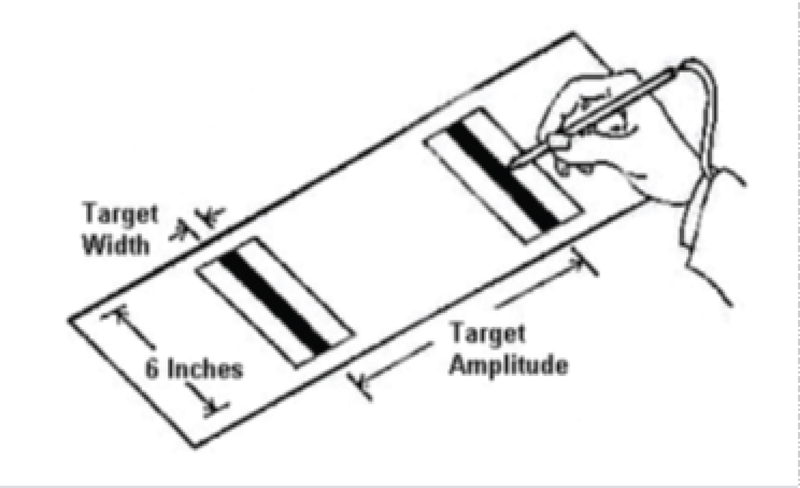This law was proposed by Paul Fitts in 1954. Fitts' law is a model of human movement/ psychomotor behavior which states that the time required to rapidly reaching or move to a target area is a linear function of target to user distance and the size of the target. This law has been derived from Shannon’s Theorem 17, a fundamental theory of communication systems (MacKenzie, 1992).This model is rigorously used in contexts of cognitive ergonomics and human computer interaction. Fitts’ law is used to model the act of pointing, either by physically touching an object with a hand or finger, or virtually, by pointing to an object on a computer display using a pointing device. Equation of Fitts’ law for calculation of movement time is as follows:
MT = a + b × log2 ID
Or
MT= a + b × log2 (2A/W)
In this equation,
MT= Movement time
ID= Index difficulty
a= time which is not involved in cognitive-motor movement.
b= Slope of the linear curve
Index difficulty could be calculated by estimation of A and W. In this equation both A and D are measures of distance. According to Fitts’ experiment, the symbol A designates the distance or amplitude to move and W designates the width or tolerance of the region within which the move terminates (See the Figure 8). It was found from Fitts’s experiment that movement time was greater in case if hard task than the easy task.

Figure 8. Arrangement of the serial tapping task (Adapted from Fitts, 1954).
The first use of Fitts' law found in HCI research was the work of Card, English, and Burr (1978) who applied Fitts’ model on data collected in a text selection task using a joystick and a mouse. In this experiment, participants were asked to move the cursor from a home position to a target (a word) and select it by pushing a button. Many other HCI researchers have subsequently applied Fitts' law in different contexts. Examples include Boritz, Booth, and Cowan (1991); Card, Mackinlay, and Robertson (1990); Gillan et al. (1991); Walker and Smelcer (1990); and Ware and Mikaelian (1987).

